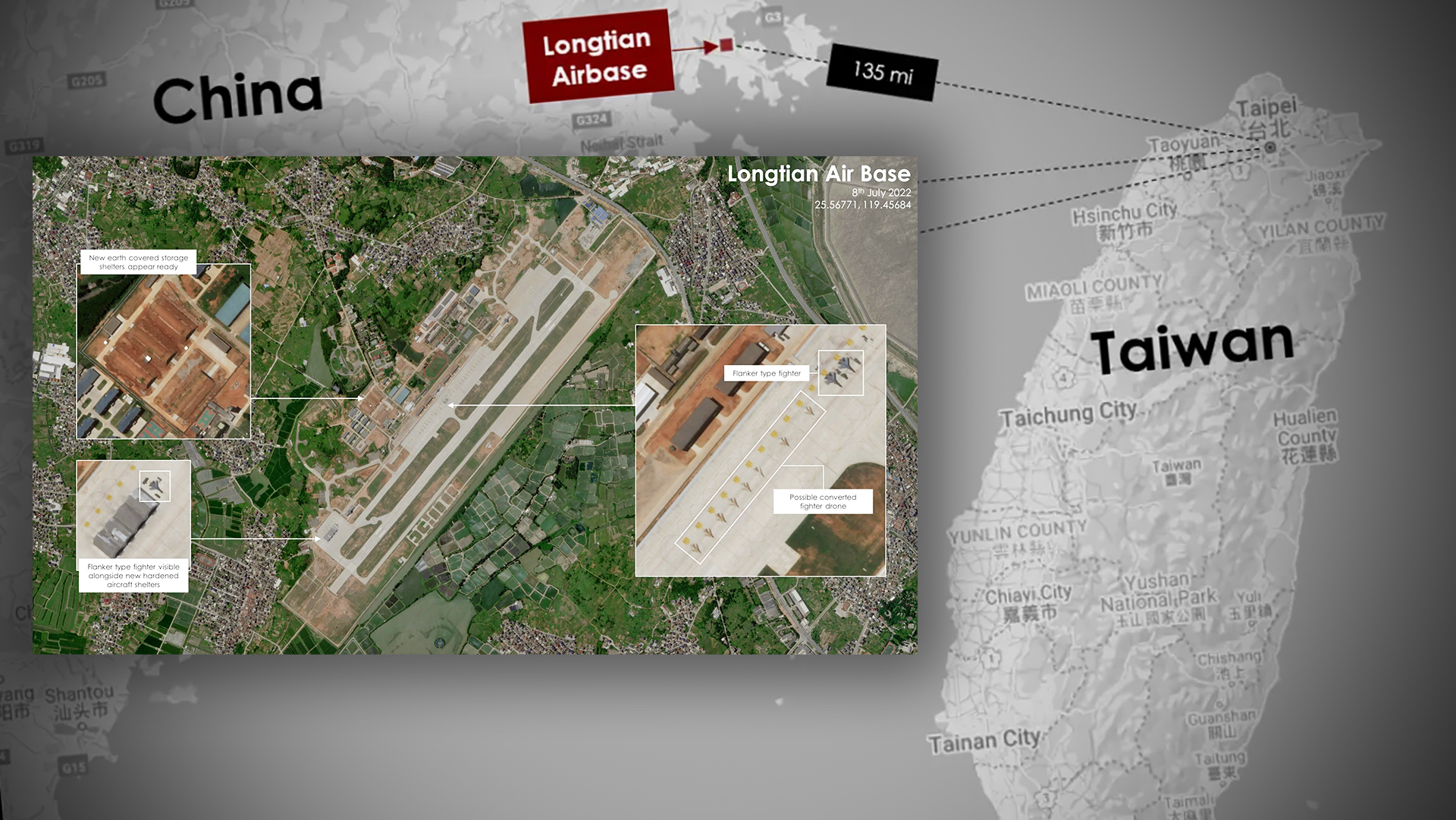A satellite image shows that a major years-long expansion effort at a Chinese airbase situated very close to the Taiwan Strait, and just under 105 miles from Taiwan proper, appears to be all but complete. A contingent of Flanker fighter jets also appears in the imagery of the much-improved base at Longtian, which is also the closest Chinese airfield to the Taiwanese capital Taipei. The jets have joined an existing fleet of thoroughly outdated J-6 fighters at the base, which have very likely been converted into drones that the People’s Liberation Army could use to overwhelm Taiwanese air defenses during the opening stages of a future invasion.
@detresfa_, an independent open-source intelligence analyst and contributor to The War Zone, alerted us to the new developments at Longtian. In the image of the base, which we obtained from Planet Labs and was taken on July 8, a Flanker-type fighter can be seen on an apron just off the southern end of the main runway, next to a row of four hardened aircraft shelters. Another pair of these jets are visible on the main ramp, parked in between two rows of J-6s.
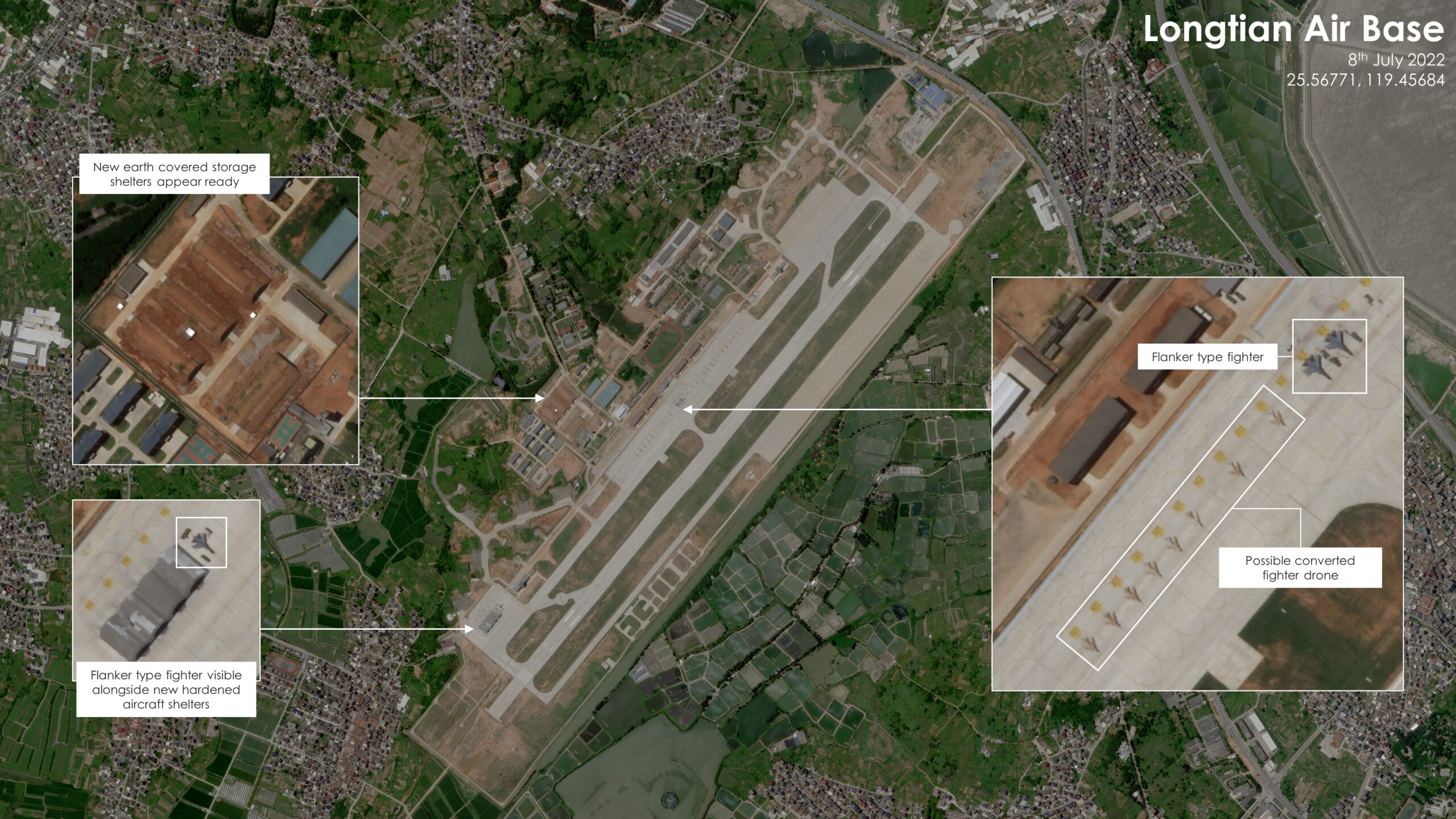
Separately, a number of storage shelters situated within a fenced or walled-in area now look to have new earthen coverings. @detresfa_ posited that these could be for storing munitions. However, munition storage facilities are more often spaced further apart to help ensure that attacks or accidents in one shelter do not cause a chain reaction that could destroy multiple neighboring structures. In addition, these shelters at Longtian appear to be drive-through, suggesting these might be intended to provide protected locations to prepare drones for deployment, or munitions and other stores for loading onto aircraft, before missions.
The hardened aircraft shelters, which @detresfa_ told us do not appear to be ready for use based on signs of ongoing work and new coatings being applied to their roofs, and the storage shelters are among the many significant new additions at Longtian that have been constructed in the past two years or so. You can see the full extent of this work in the annotated image below and read more about the expansion effort at this base and others in eastern China along the Taiwan Strait in this past War Zone piece.
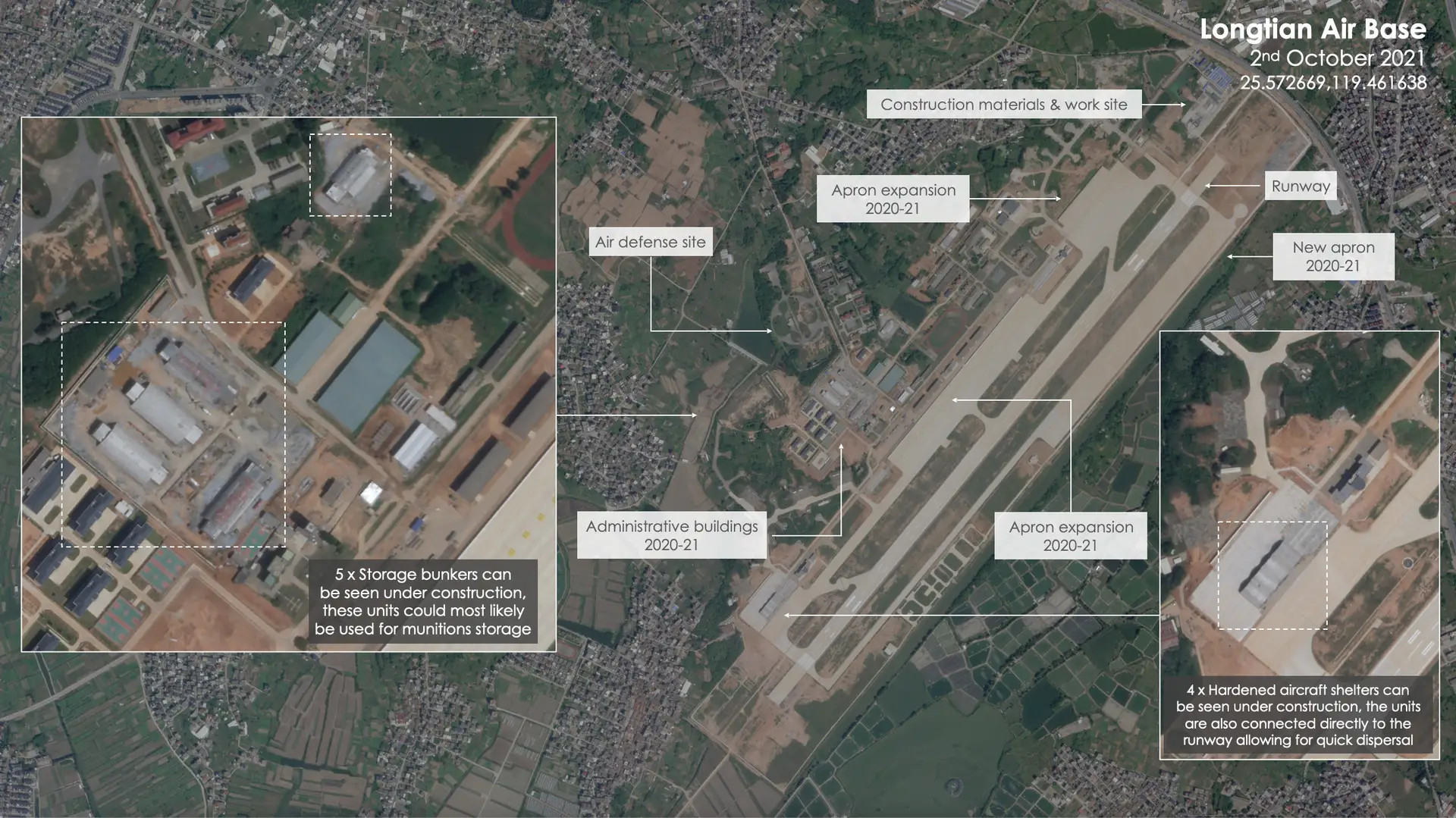
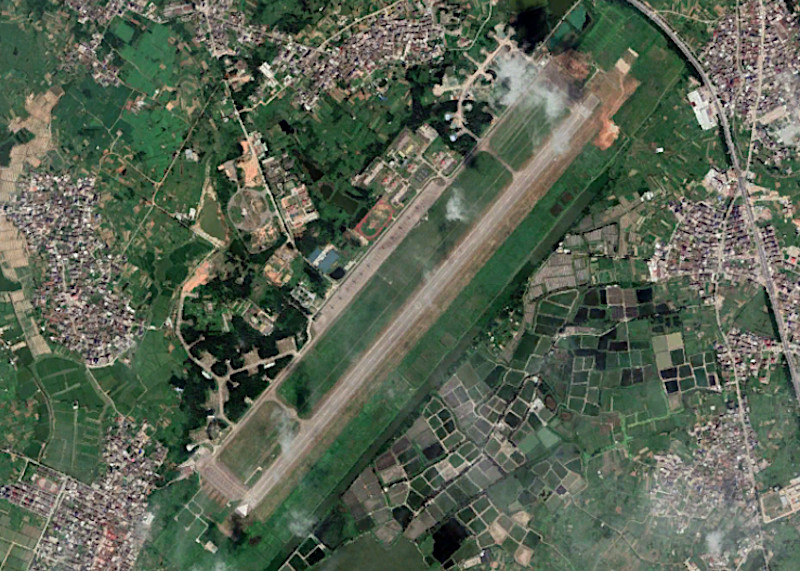
The presence of the Flanker-type fighters and the J-6s parked in various places indicates normal or near-normal operations at Longtian have now resumed. It is unclear whether the Flankers are now permanently based there, but the J-6s have been a fixture at the base for more than two decades at least now based on other available satellite imagery.

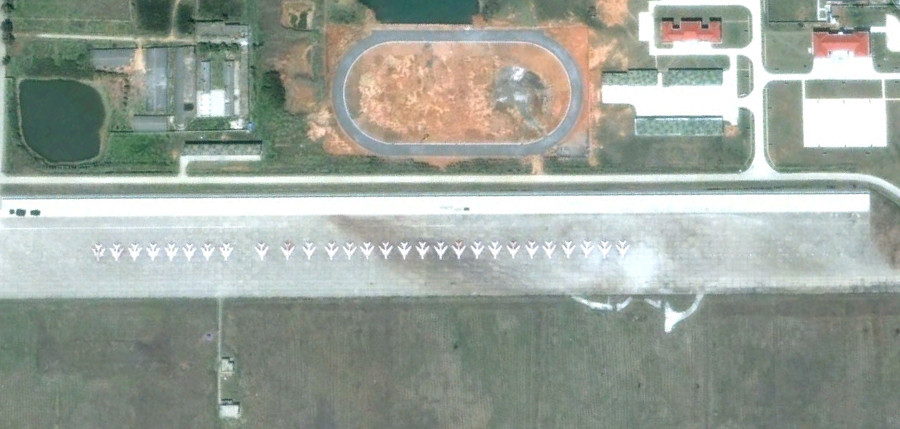
The Shenyang J-6, derived from the Soviet MiG-19, first entered PLAAF service in the 1960s and the type was all but removed from frontline service in the 1990s. The Chinese military subsequently converted a significant number of these jets into drones, sometimes referred to as J-6Ws.
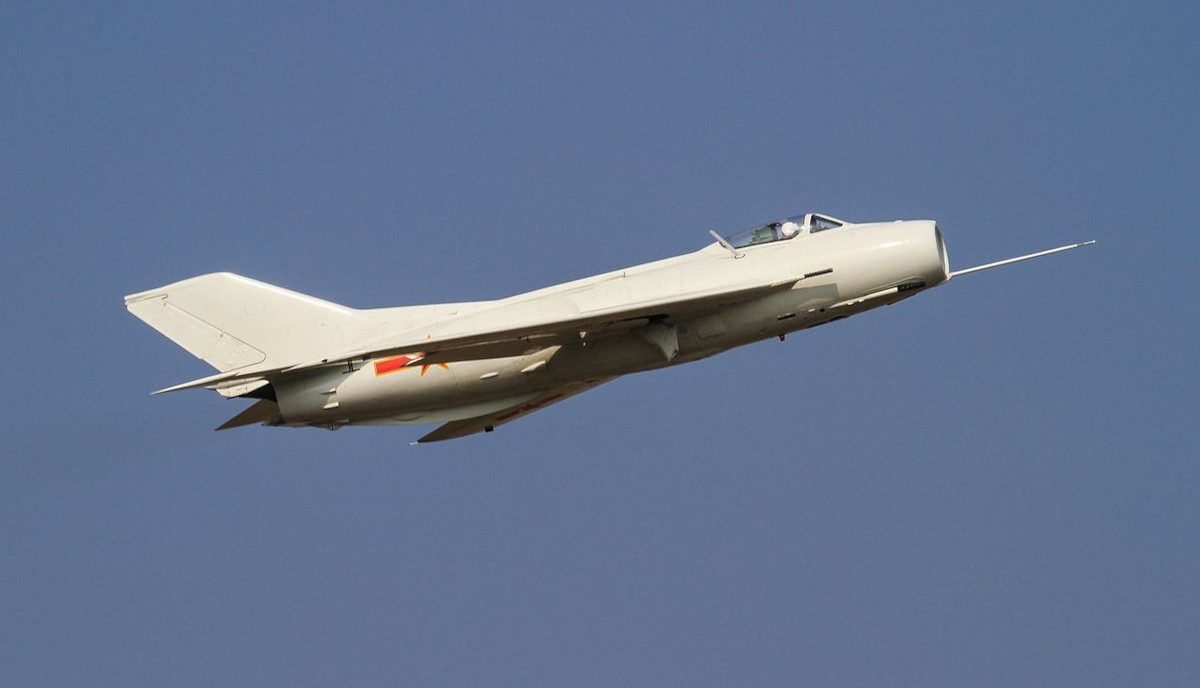
Though these converted aircraft can certainly serve as aerial targets and otherwise be used for limited training purposes, it is widely understood that the PLAAF maintains fleets of these jets, and the ability to rapidly convert more, at a number of bases so that could be used as decoys to confuse and overwhelm enemy air defenses – especially those on the island of Taiwan. In doing so, they would also deplete precious missile stockpiles and leave distracted fighters vulnerable to attack. J-6Ws could be loaded with explosives and employed as crude cruise missiles as part of a larger barrage, too. Disposable electronic warfare payloads could complicate the radar pictures of Taiwanese air defenders further. While reusable in a similar sense as U.S. QF series full-scale aerial targets (FSATs), during the opening stages of a conflict, these would be launched on one-way missions. This strategy is especially relevant for cross-strait warfare, which includes short ranges and a highly complex and target-dense battlespace.
With all this in mind, it’s interesting to note that the PLA’s Eastern Theater Command, which has jurisdiction over the bulk of military activities in areas of the mainland immediately opposite Taiwan, released pictures in October 2021 of one of its J-6W units at an unspecified base. Some efforts by open-source intelligence enthusiasts online to geolocate where the photos were taken had pointed Longtian, but that analysis remains inconclusive.
It’s also worth pointing out that the hardened aircraft shelters and associated apron now adjacent to the southern end of the main runway appear to have replaced an open-air alert pad, which has now transformed into a simple taxiway. J-7 fighter jets, derived from the Soviet MiG-21 design, had been visible at times parked on the previous pad, as well as elsewhere at Longtian. The PLAAF has steadily pulled J-7s from frontline service and it’s unclear if any remain at Longtian. Some of those aircraft have now reportedly been turned into drones, as well.
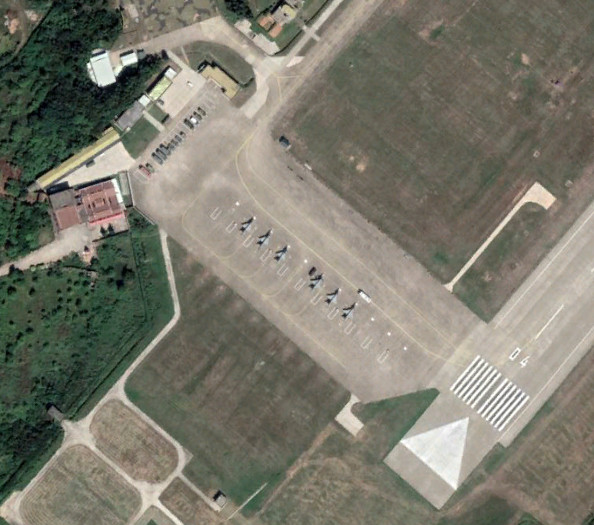
Curiously, on June 17, 2021, the Taiwanese Ministry of National Defense announced that it had tracked four J-7s, along with a pair of J-16s, a Chinese Flanker derivative, and a Y-8 electronic warfare aircraft flying in the southwestern end of it the island Air Defense Identification Zone (ADIZ). Taiwanese officials released a file photo of a J-7 as part of that announcement and did not specify whether they believed these jets were manned or unmanned. There’s no indication one way or another where any of those aircraft were operating from on the mainland. The recorded flight tracks would seem to point to a base further to the south from Longtian, but we can’t say for certain.
Since September 2020, the Taiwanese military has been making routine public announcements about PLA military aviation activity inside the ADIZ, which is now an almost daily affair and has included major shows of force clearly meant to intimidate authorities in Taipei and their international partners, such as the United States. To date, the sorites last June are the only reported instances of J-7s of any kind taking part in such flights and there have been no reports involving J-6s.
Russian-made Mi-8/Mi-17 type helicopters had also been observed at Longtian prior to the start of the construction to expand the facilities there in 2020.
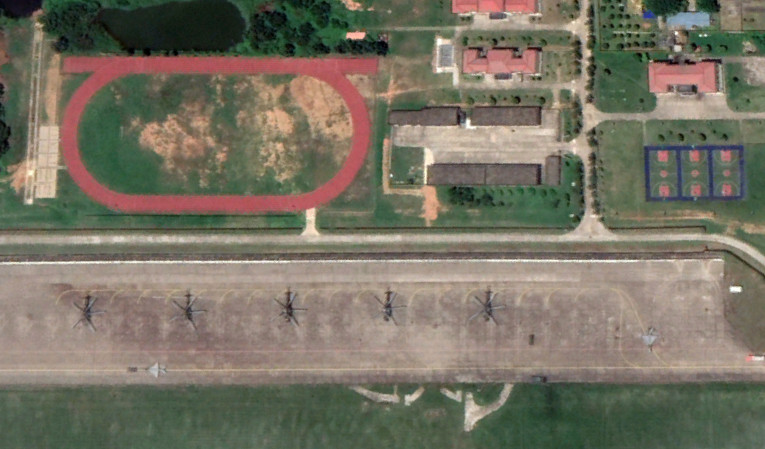
All told, it’s very possible that the newly enlarged Longtian airbase is now capable of hosting a variety of different types of aircraft, and more of them overall. Its expanded facilities, which include a significant new amount of open ramp space on both sides of the main runway, could well accommodate a large number of transient aircraft in support of various kinds of operations in addition to whatever types might be permanently based there.
Longtian is one of the People’s Liberation Army Air Force’s (PLAAF) closest bases to Taiwan, and is the closest to the island’s capital Taipei. Unsurprisingly, there are clear indications that seizing or destroying a number of high-profile targets in Taipei, including the Presidential Office Building, would be a top priority for Chinese forces in the event of an invasion.
Even before it was completed, the work at Longtian was a clear example of broader efforts on the part of the PLA to dramatically expand its capacity to stage and conduct military aviation operations along the Taiwan Strait. At least two other PLAAF bases in close proximity to Taiwan have seen similar amounts of new construction in recent years, as you can read more about here. In March 2021, The War Zone also reported on a huge and entirely new military heliport that satellite imagery showed was being constructed in the region, as well.
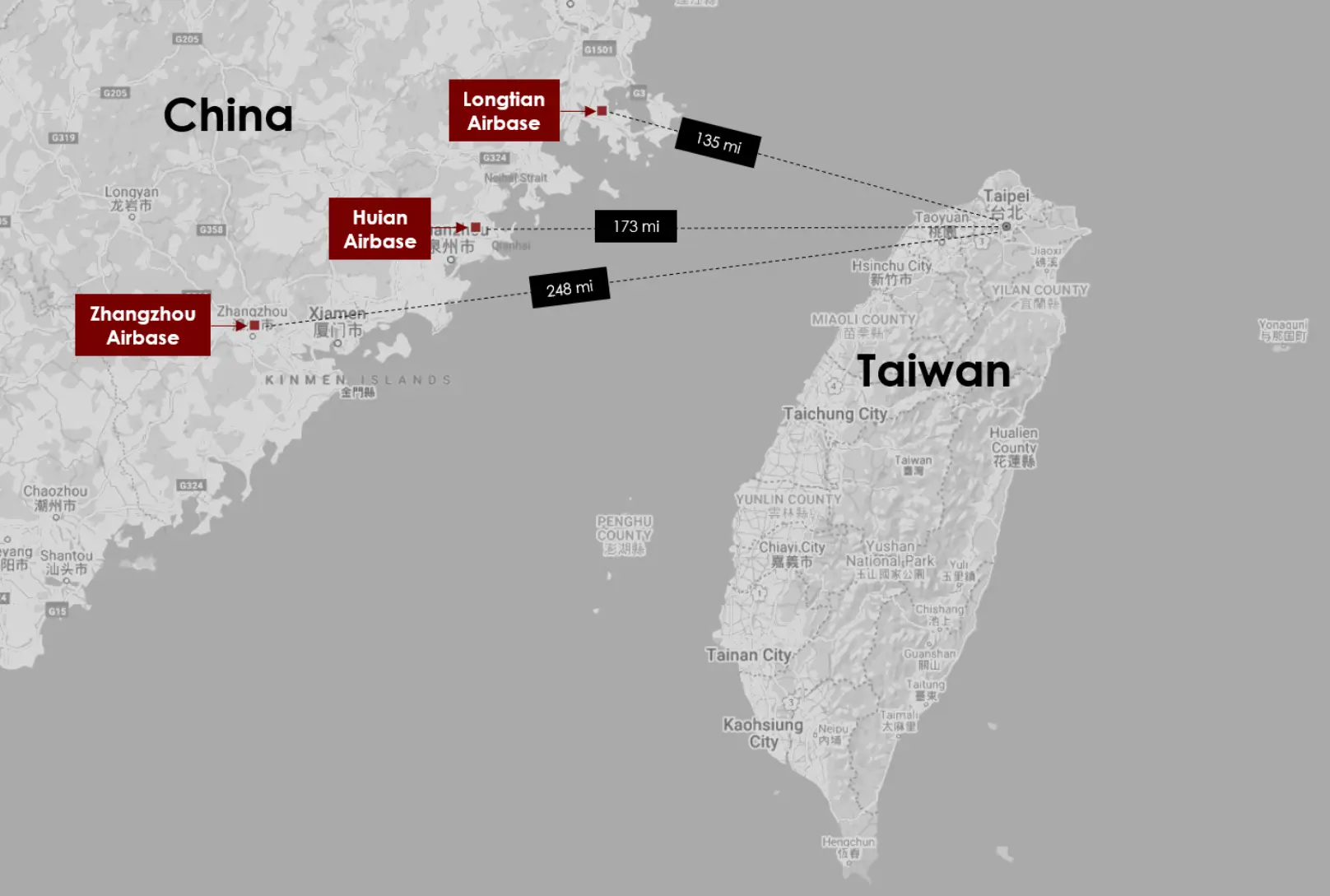
Regardless, the base has clearly been remodeled to accommodate major surge operations during a conflict with Taiwan. And this includes upgrades to its own surface-to-air missile defenses.
High-level U.S. military wargames, as well as ones conducted by think tanks in cooperation with American officials, now continually indicate that airpower, and the unmanned type, in particular, will be absolutely essential in any future defense of Taiwan scenario. Being able to bring advanced, networked drone swarms with high degrees of autonomy could very well be a decisive factor for U.S. forces in any such conflict. Longtian, and its fleet of converted J-6Ws, underscores the PLA’s own extensive efforts to integrate various tiers of unmanned aircraft into its own operations, including with an eye toward future fights over and around the Taiwan Strait.
The presence of Flankers at Longtian, beyond their core missions that exist today, could help support future manned-unmanned teaming on the Chinese side, which is also something that will become a key aspect of how China intends to fight in the future. While old converted fighter drones are absolutely relevant in the context of an invasion of Taiwan, China is making massive leaps forward in unmanned technology and has, and continues to develop a multitude of purpose-built systems that can act as decoys, even ones that can interact and ‘swarm’ with one another in large groups. While these capabilities will increasingly provide an alternative to converted surplus fighters, it is likely they will be employed alongside one another, and not replace the drone conversions. China will need all the targets it can get in the air during the opening stages of a conflict. So, for at least the foreseeable future, it is unlikely these crude unmanned aircraft will be replaced by purpose-built decoy drones or other systems.
A base like Longtian could end up deploying some of those capabilities alongside the converted surplus fighters. Far more advanced and stealthy tactical unmanned combat air vehicles could also call the long-established, strategically-located drone base home one day.
Regardless of what may come, for now, the base’s upgrades and current residents are telling enough as to its purpose.

U.S. officials, as well as their Taiwanese counterparts, have been repeatedly warning in recent years that the PLA is working to at least be in a position by 2027 where it will feel confident in its ability to successfully carry out a military intervention against Taiwan. Of course, there is no concrete evidence, at present, that the Chinese military is working on a firm schedule to execute such an operation in the next five years.
Still, all of this comes at a time of heightened tensions between China and various other countries, particularly the United States, over Taiwan and other geopolitical and economic issues. Chinese officials have been using increasingly fiery rhetoric in their statements, too.
“If the U.S. insists on going its own way, China will take forceful measures to resolutely respond and counter it, and we will do what we say,” Chinese Foreign Ministry spokesperson Wang Wenbin recently said specifically about a reported upcoming planned trip by Speaker of the House Nancy Pelosi, a Democrat Party Representative from California, to Taiwan. There are additional reports that the White House and U.S. military officials are now pushing Pelosi to cancel the trip over concerns that the U.S. military aircraft she would be expected to travel in could be challenged in some way, or worse, by Chinese warplanes.
Politico reported earlier this month that a U.S. Air Force special operations MC-130 aircraft had an “unsafe” and “unprofessional” interaction with an unspecified Chinese fighter jet while flying over the disputed South China Sea. That followed disclosures from the Australian and Canadian governments about similar incidents involving their maritime patrol planes and PLA jets.
Beyond that, last week the U.S. Navy’s Arleigh Burke class destroyer USS Benfold sailed through the Taiwan Strait on a so-called Freedom of Navigation Patrol, or FONOP, which drew an unusually sharp rebuke from Chinese authorities. Benfold was the third American warship to transit the Strait in the space of a week.
However the current geopolitical situation continues to evolve, the vastly improved Longtian airbase, among other expanding airfields in the region, now appears ready to support any future operations in and around the Taiwan Strait.
Contact the author: joe@thedrive.com
